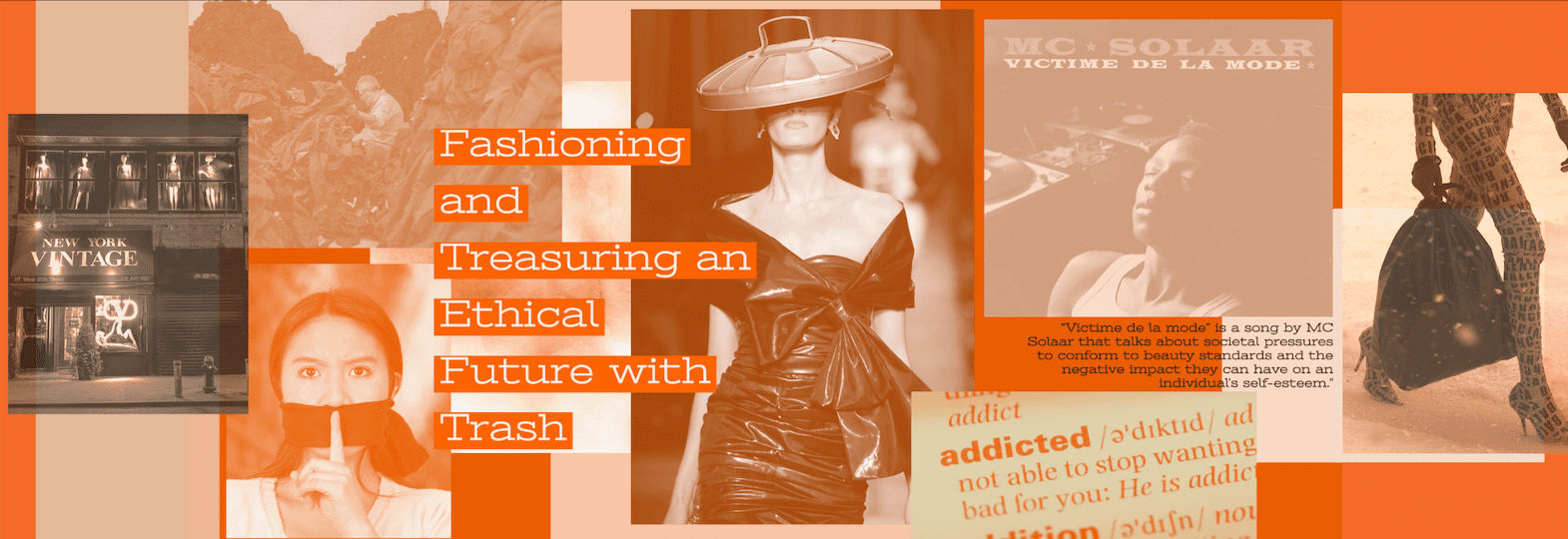The fast fashion industry has evolved into an even faster-paced phenomenon called ultra-fast fashion, largely influenced by the interplay between micro trends and social media.
Unfortunately, the unsustainable nature of this fast and furious fashion has led to adverse effects such as climate change, depletion of natural resources, and loss of biodiversity. Fashion, evidenced as the world’s second most polluting sector, emits a staggering amount of carbon dioxide, accounting for up to 10 per cent of global emissions, surpassing even the combined emissions from international flights and shipping. Not only that, but it also ranks as the second largest consumer of the world’s water supply.1 Disturbingly speaking, more than two billion animals are subjected to cruelty within the global fashion industry each year for the production of wool, fur, and leather products.2 As a result, fashion has suffered accumulated unpayable debts to the environment. These toxic debts are a consequence of a myriad of factors, encompassing overproduction, overconsumption, waste etc. In light of this pressing issue, how has this multibillion-dollar industry-initiated measures to address this alarming situation?
Circularity is the Name of the Game
In a stunning revelation, it was found that out of the staggering 100 billion garments manufactured annually, 92 million tonnes eventually find their way into landfills. To provide some context, this signifies that a rubbish truck’s worth of clothing is discarded onto landfill sites every second. If this concerning trend persists, experts predict that the volume of waste generated by the fast fashion industry could skyrocket to a shocking 134 million tonnes per year by the conclusion of the decade. According to projections, the global emissions produced by the apparel industry are expected to surge by 50 per cent by the year 2030.3 This alarming increase in carbon footprint highlights the significant impact of the industry on climate change and underscores the urgent need for sustainable and environmentally conscious practices within the fashion sector. In a quest for sustainability, experts are exploring novel eco-friendly materials like fungus, algae, shell waste, and others. Concurrently, they are also spearheading groundbreaking recycling techniques, aiming to revolutionise resource management and promote a circular economy.
According to a 2022 report by consulting firm McKinsey, it has been estimated that by 2030, an investment of approximately six to seven billion euros would be necessary to effectively manage and address a minimum of 18 per cent of the textile waste generated in Europe.4 This projected investment accentuates the magnitude of the challenge at hand and highlights the need for substantial financial resources to develop sustainable solutions and infrastructure for handling textile waste in the region.
For instance, not only embodying the DNA of Prada, its Re-Nylon programme also serves as a powerful representation of the brand’s commitment to sustainability—Through this programme, Prada ingeniously recycles “post-consumer” plastic sourced from landfills and oceans on a global scale. In addition, the brand is actively engaged in raising awareness and educating high school students worldwide through the impactful Sea Beyond campaign. Prada’s Re-Nylon programme not only champions environmental consciousness but also strives to inspire the younger generation to become advocates for a cleaner and more sustainable future.5
Living the Best Second Life, or Even Fifth
Archival or old fashion is now forever treasured and shopped! The concept of wearing previously owned garments is no longer regarded as taboo. Maison Valentino is expanding its Valentino Vintage network, an initiative launched in 2022 that combines online and physical spaces for clothing recovery in seven vintage stores located in Milan, Paris, London, Tokyo, Seoul, New York, and Los Angeles.6 The aim is to allow customers to exchange their Valentino garments, giving them a second life while celebrating individuality through creativity and authenticity. The Valentino Vintage network cultivates fresh creativity, which breathes new life into timeless beauty while nurturing a forward-thinking community driven by consciousness.
Thanks to the ingenious emergence of fashion rental platforms like Rent the Runway, these sites have proven to be incredibly successful at offering a fabulous hireable alternative to traditional ownership.7 Given the rapid expansion of the exponential growth of the sharing economy, Forbes projects that by 2025, it will be valued at an impressive $335 billion.8 This substantial valuation emphasises the increasing popularity and economic significance of collaborative consumption models.
Transforming the Fashion Industry as a Whole
Numerous experts concur that reliance on new natural resources should be minimised in favour of embracing circularity, a perpetual fashion cycle that promotes biodiversity preservation. To unite the industry’s efforts, The Science Based Targets Network has emerged, offering assistance to companies in setting nature-based goals aligned with the Paris Agreement.9 This collective approach ensures a sustainable future for the fashion industry, where all stakeholders work together towards a common cause.
In the current landscape, it is fundamental for brands and consumers to shift their perspective from thinking solely on an individualism scale to considering the global impact of their actions. The repercussions of consumption decisions now reach a global scale. Recognising and addressing these broader implications is highly essential for us to contribute positively to our interconnected world.








Comments